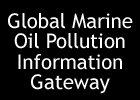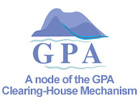 |
|||
 |
|||
|
|
|||
 |

The objective of the Global Marine Oil Pollution Information Gateway — which is the oil pollution node of the UNEP GPA Clearing-House Mechanism — is to establish a clearing-house, a gateway, for providing information on and a forum for exchange of information on the global, regional and local problems caused by marine oil pollution. Here one will find information on the efforts made by the international community to address the problem, and find ways to take preventive action on the global, regional and national level. Major threats to the health, productivity and biodiversity of the marine environment result from human activities on land — in coastal areas and further inland. A large proportion of the pollution load in the oceans originates from land-based activities, including municipal, industrial and agricultural wastes and run-off, as well as atmospheric deposition. These contaminants affect the most productive areas of the marine environment, including estuaries and nearshore coastal waters. The marine environment is also threatened by physical alterations of the coastal zone, including destruction of habitats of vital importance to maintain ecosystem health. In response to these major problems, 108 governments and the European Commission in 1995 declared their commitment to protect and preserve the marine environment from the adverse environmental impacts of land-based activities. The UNEP Global Programme of Action for the Protection of the Marine Environment from Land-based Activities and the Washington Declaration were adopted in 1995 and UNEP was tasked to lead the co-ordination effort and to establish a GPA Co-ordination Office. The GPA targets major threats to the health, productivity and biodiversity of the coastal and marine environment resulting from human activities on land. It is an integrated, multi-sectoral program, premised on serious commitment for action at all levels: local, national, regional and global. It recognizes the need for improved, regular co-operation at the regional level, as well as partnerships with international organizations and major groups that contribute to the pollution and degradation of the coastal and marine environment. The GPA is designed to be a source of conceptual and practical guidance to prevent, reduce, control or eliminate marine degradation from land-based activities. Action at the national level, supported by regional and global action, is recognized as the major guarantee for the successful implementation of the GPA. Effective implementation is an essential step forward in the protection of the marine environment, and contribution to the objectives and goals of sustainable development. It relies ultimately on the political will and determination of Governments to take concrete action in addressing the underlying causes of marine degradation originating from land-based activities. It is, inter alia, recommended that the Statesidentify and assess problems related to the severity and impacts of contaminants including sewage, persistent organic pollutants, radioactive substances, heavy metals, oils, nutrients, sediment mobilization, marine litter, and the physical alteration, including habitat modification and destruction (the GPA Pollutant Source Categories). At the regional level one of the major objectives of the GPA is to support and facilitate the implementation of land-based sources/activities components of the various UNEP Regional Seas Conventions and Action Programmes. One important part of the work of the GPA Co-ordination office has been the establishment of an information and data Clearing-house as a means to mobilize experience and expertise, including facilitation of effective scientific, technical and financial cooperation, as well as capacity-building. The GPA Clearing-house Mechanism provides a rapid and direct referral system to relevant information and data. In effect, it provides a mechanism for responding to requests from Governments on a timely basis. The Global Marine Oil Pollution Information Gateway is one of nine pollutant source category nodes of this Clearing-House mechanism. The GPA Clearing-House mechanism is intended to provide "a one-stop method that promotes the advertising, discovery, access, dissemination and use of GPA related information and data held by numerous organizations using the decentralized capabilities of the Internet". Home
• Facts •
Global action
• Regional
action • Good examples
• Kids' pages •
Documents •
Contacts •
GPA nodes • About
• Search • Site
map
|